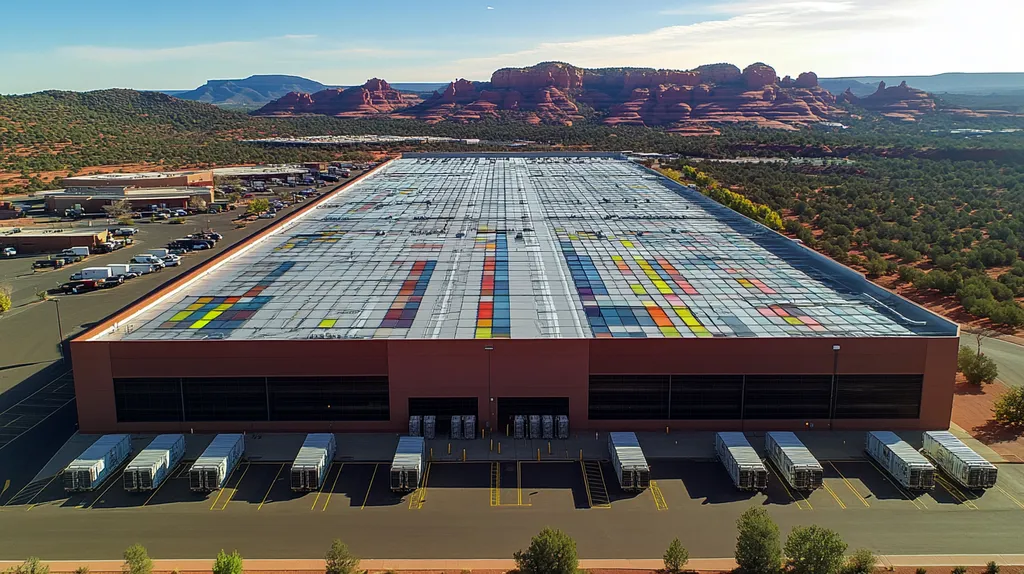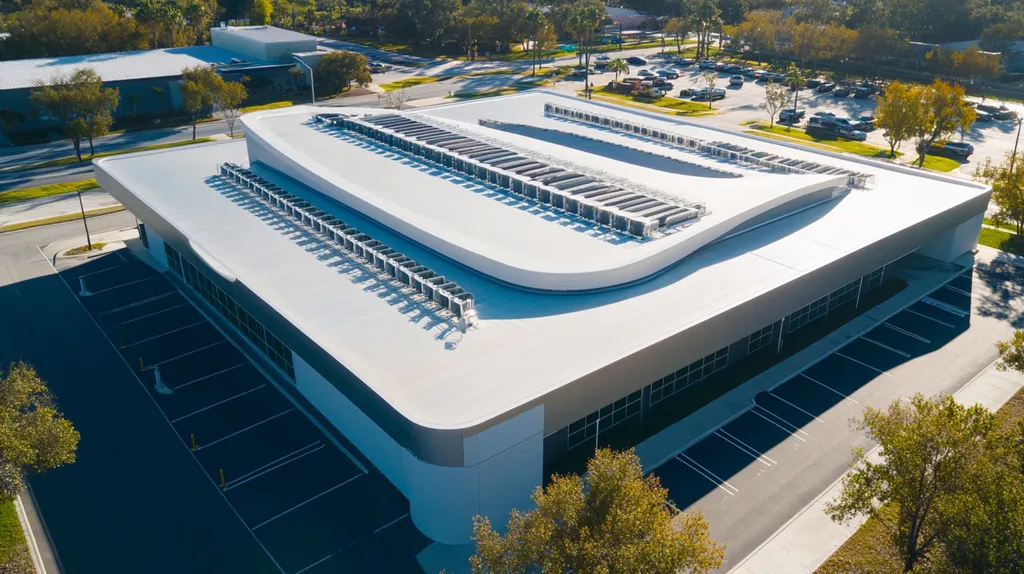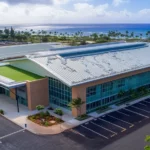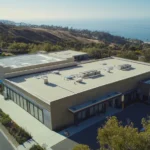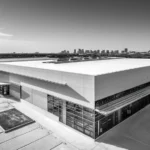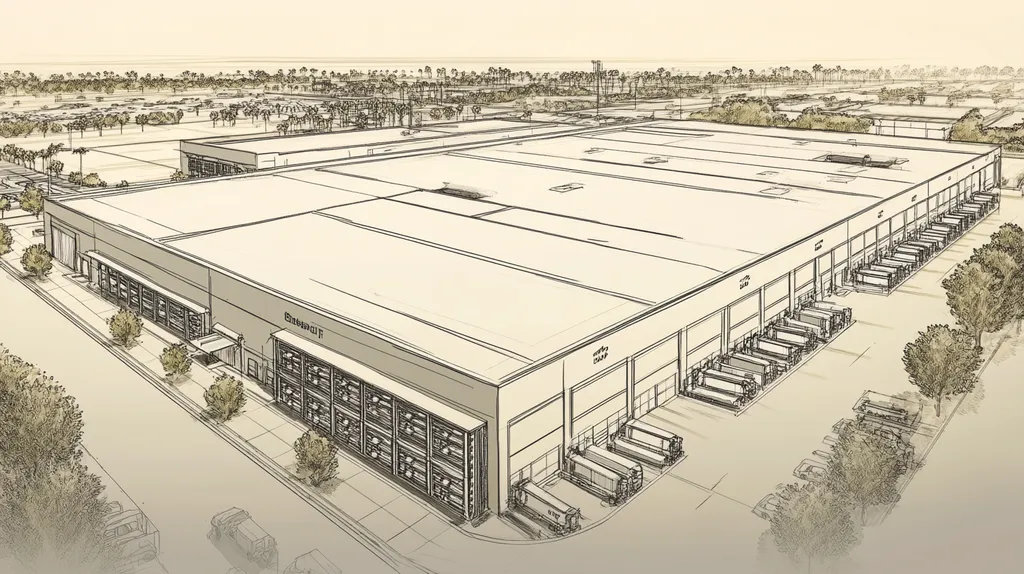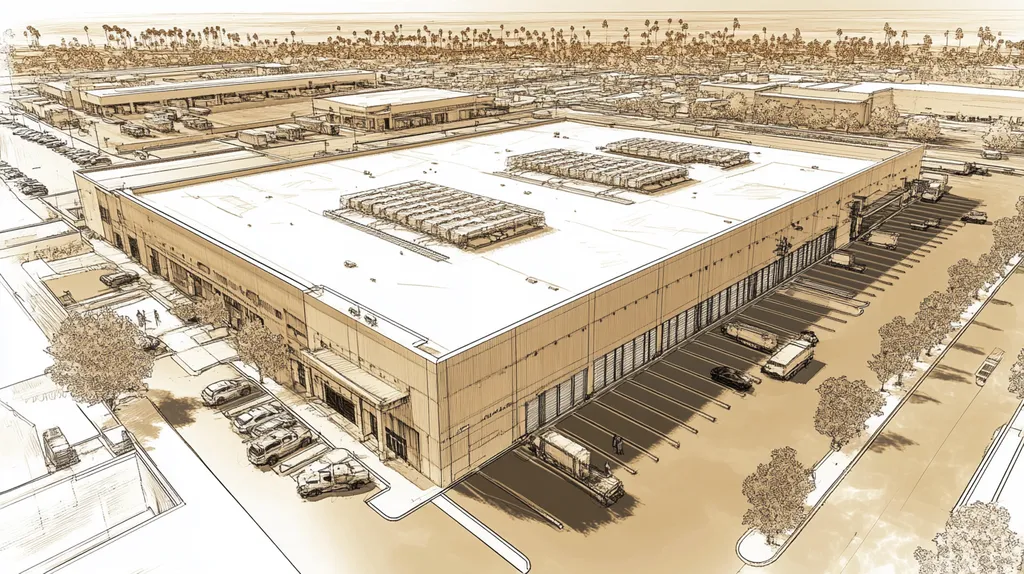When it comes to commercial roofing, local knowledge isn’t just helpful—it’s essential for success. Industry data shows that up to 40% of commercial roofing projects experience significant complications due to contractors lacking crucial regional expertise.
From understanding unique climate challenges to navigating complex local building codes, choosing a contractor with deep local knowledge can mean the difference between a roof that lasts decades and one that fails prematurely.
This comprehensive guide examines why local expertise matters, how it impacts your project’s success, and what critical factors you should consider when selecting a commercial roofing contractor.
SECTION 1: THE BASICS EXPLAINED
Selecting the right commercial roofing contractor isn’t just a job; it’s a critical decision that can mean the difference between a simple repair and a significant financial loss. Astonishingly, about 50% of roofing projects fall short of expectations due to poor contractor choices. A firm grasp of the local landscape—including climate conditions, regulations, and the right materials—can dramatically influence the success, durability, and cost-effectiveness of your project. This section will explore these vital elements to empower property owners and facility managers to make well-informed decisions.
What It Is (In Plain Language)
Local knowledge is the contractor’s insight into the unique conditions of a given area. This encompasses climate considerations such as rainfall, snow loads, and temperature fluctuations, as well as an understanding of local building codes that differ from place to place.
For example, a roofing contractor in Florida must prepare for hurricanes and humidity, whereas a contractor in the Midwest must account for heavy snowfall and ice. Local contractors are not only aware of these climatic challenges but also know which materials can best withstand them. This expertise is essential for selecting a roofing system that is built to last and perform effectively.
As a result, a contractor well-versed in local conditions can provide customized solutions, greatly improving the likelihood of a successful roofing project.
In summary, local knowledge is key to ensuring roofs are engineered to endure, which directly influences their longevity and functionality.
Why It Matters (To Your Building)
The importance of local knowledge transcends mere aesthetics; it directly impacts the integrity and safety of your building. Structures located in areas with extreme weather must possess roofs capable of handling such conditions. A contractor who lacks local expertise may choose unsuitable materials or designs, significantly increasing the risk of leaks and damage.
Imagine a manufacturing facility in a region known for heavy rainfall. If the contractor is not familiar with local drainage requirements, they might skip essential design features, potentially leading to water pooling. This can accelerate roof deterioration and lead to costly repairs.
Moreover, a knowledgeable local contractor is better positioned to navigate required permits and inspections, ensuring that all roofing work adheres to local codes. This minimizes the risks of fines or necessitated changes, which is crucial for maintaining operational efficiency and protecting investments.
Ultimately, partnering with a contractor who has a robust understanding of local conditions protects the building’s structure while ensuring compliance with industry standards, bolstering overall investment security.
How It Works
Selecting a roofing contractor with deep local experience begins with thorough research. Property owners should look for contractors who boast a proven track record in their area, complemented by positive reviews from similar projects. This approach establishes credibility and trust from the outset.
Next, it’s important to assess immediate factors, such as clear communication and familiarity with local materials and practices. Effective contractors often provide detailed proposals that clearly outline how they will address regional challenges related to climate, code compliance, and sustainability.
Furthermore, reputable contractors generally maintain strong relationships with local suppliers. This not only leads to better pricing but also ensures access to high-quality materials tailored for the region’s specific needs. Their established connections can prompt quicker response times during emergencies.
In essence, making informed decisions involves engaging contractors who understand the local environment and best practices. This diligence minimizes risks and enhances project outcomes, paving the way for successful roofing solutions that stand the test of time.
SECTION 2: PRACTICAL APPLICATIONS
The importance of selecting the right commercial roofing contractor cannot be overstated. In fact, a recent survey indicates that approximately 30% of commercial roofs fail prematurely, often due to improper installation and a lack of local expertise. Understanding the unique climate factors, building codes, and available materials significantly influences the success of your roofing project. This section delves into practical applications of local knowledge and highlights the scenarios where it becomes crucial.
Common Uses & Examples
Local knowledge is essential for selecting the right materials and installation techniques based on prevailing weather conditions. For instance, contractors in snowy regions know how to design roofs that can safely bear the load of heavy snow. In contrast, contractors in humid areas often recommend materials specially engineered to resist mold and mildew, ensuring a longer roof lifespan.
Moreover, local contractors are well-versed in regional architectural styles and building codes. This understanding enables them to suggest materials that not only fulfill aesthetic desires but also comply with local regulations, thus avoiding costly delays related to permits.
By leveraging their regional expertise, contractors can also tailor maintenance recommendations based on local climate patterns. For example, in areas facing heavy rainfall, they may advise on regular gutter cleaning to prevent water accumulation and subsequent structural damage.
In summary, local expertise equips contractors to select the best materials and methods for each specific project, thereby increasing the likelihood of a successful roofing installation.
When You Need It Most
Certain situations demand an elevated awareness of local knowledge. For instance, during significant roofing renovations or replacements, it is essential to hire contractors familiar with local conditions. They can help navigate unique ordinances and environmental regulations that vary widely across communities.
Unexpected weather events also call for quick, informed action. Local contractors are adept at swiftly assessing damage and proposing appropriate repair options to minimize further complications and ensure safety.
Consider a business situated in a hurricane-prone area; hiring contractors with expertise in wind-resistant roofing techniques is invaluable. These specialists can provide recommendations on roofing systems that can withstand severe storms, protecting both the building and its occupants.
Ultimately, choosing a roofing contractor with profound local knowledge can be a game-changer, especially during critical moments when informed, swift decisions are required.
Interactions With Other Systems
A roofing system does not function in isolation; it is interconnected with other building systems, making local knowledge even more crucial. Proper insulation and ventilation must align with local climate factors to ensure optimal performance. A knowledgeable contractor can recommend solutions that enhance energy efficiency while simultaneously meeting local building codes.
Additionally, local contractors often understand how best to integrate roofing systems with existing HVAC setups. They can suggest materials that promote proper airflow and thermal regulation, which boosts the overall building performance.
When considering the installation of solar panels, local experts can assess geographic factors to maximize potential solar gain. They can advise on the ideal angle, placement, and roofing type to enhance energy production, ultimately providing a significant return on investment.
In conclusion, recognizing the intricate relationships between roofing systems and other building components emphasizes the necessity of local insights, ensuring a comprehensive and efficient approach to any commercial roofing project.
SECTION 3: KEY TERMINOLOGY DECODED
Understanding industry terminology is essential when selecting a commercial roofing contractor. Misunderstandings can lead to costly errors, project delays, or even chronic leaks down the line. For example, a property owner confused about “energy efficiency ratings” might overlook options that could save thousands in utility costs. Grasping key roofing vocabulary equips clients to communicate effectively with contractors and ultimately ensures the success of their roofing projects.
Essential Terms Explained
Familiarity with key terms is crucial for property owners hiring roofing contractors. A “roofing system” encompasses everything from shingles and membranes to insulation and underlayment. Understanding this distinction helps property owners evaluate the entire roofing system’s compatibility with their building.
Another critical term is “scope of work.” This phrase outlines the specific tasks and materials included in a contract. A clear scope minimizes the chances of misunderstandings, maintaining budget integrity and adhering to timelines.
The term “warranty” is equally important. A good warranty stipulates coverage for materials and workmanship, indicating that both the product and the installation hold up to scrutiny. It offers peace of mind to the property owner, securing long-term investment.
Mastering these foundational terms empowers clients to engage meaningfully with contractors, ensuring their roofing needs are effectively addressed.
Industry Jargon Translated
Industry jargon might appear intimidating, but it can be simplified. For instance, “low-slope roofing” describes roofs with a minimal incline. This category includes materials like EPDM and TPO, which are frequently chosen for commercial applications.
Understanding “drainage plan” is vital for water management, helping to prevent leaks and structural damage. An effective drainage plan takes into account the building’s layout and the local climate to optimize its performance.
Another crucial term is “flashing,” which refers to materials used to seal joints and hinder water ingress in vulnerable areas such as chimneys and vents. Properly installed flashing is essential for maintaining the integrity of the roof over time.
Grasping these terms allows property owners to voice their requirements and questions more clearly, facilitating better communication with contractors and enhancing project outcomes.
Measurement & Units Simplified
Measurement and units can seem complicated, yet they are vital for effective roofing projects. The term “square” indicates a roofing measurement of 100 square feet. Understanding this helps in accurately estimating material quantities and costs.
“Ply” refers to the layers in a roofing system, affecting its strength and durability. A single-ply system is typically lighter, while multi-ply systems offer increased protection from weather challenges.
Another essential measure is “R-value,” which denotes insulation effectiveness. Higher R-values equate to better thermal resistance, translating into energy savings for building owners.
Being familiar with these measurements enables property owners to make well-informed decisions, ensuring they select materials and systems that are optimally suited to their specific climate and building type.
SECTION 4: DECISION FACTORS
When it comes to selecting a roofing contractor, overlooking local market conditions can lead to financial pitfalls. According to the National Roofing Contractors Association, mistakes in contractor selection can inflate project costs by up to 30%. It is crucial for property owners and facility managers to evaluate key decision factors such as cost, performance trade-offs, and the lifespan of roofing systems. These elements directly affect the roof’s functionality and durability, ultimately shaping the property’s long-term financial outlook.
Cost Considerations
Cost involves more than just the initial price tag; it represents the total lifetime investment in a roofing system. Local contractors often build strong relationships with suppliers, which enables them to obtain materials at better rates. This can mean substantial savings for property owners.
Moreover, these contractors have a firm grasp of regional zoning laws, permitting fees, and other local costs. Failing to consider these components can lead to unexpected expenses. An experienced contractor can offer robust estimates that accurately reflect the true project costs.
A seasoned local contractor can also foresee potential budget pitfalls, suggesting cost-effective alternatives that don’t compromise quality. For instance, they may recommend materials better suited to withstand local climate conditions, thus reducing the need for frequent repairs.
Consequently, understanding local economic influences and project costs is vital when choosing a roofing contractor. This proactive mindset not only safeguards the investment but also enhances financial planning throughout the roof’s lifespan.
Performance Trade-offs
Every roofing material has inherent strengths and weaknesses that can significantly influence performance depending on local conditions. For example, a roofing system designed for tropical climates may fall short in areas prone to heavy snowfall.
Local knowledge equips contractors to recommend the most suitable materials for regional environmental challenges. They understand which options deliver optimal energy efficiency and weather resistance, ultimately affecting operational costs.
A contractor with familiarity in local building codes ensures compliance, preventing costly delays and reworks. This adherence protects both the contractor and the property owner from potential legal complications.
By thoroughly considering performance trade-offs based on local expertise, property owners can avoid choosing low-cost materials that may fail in their specific climate. Informed decision-making leads to long-term satisfaction and enhanced property value.
Lifespan & Durability Factors
The lifespan and durability of roofing systems are critical in decision-making. Roofs must endure harsh weather and environmental factors, qualifying them as long-term investments. Contractors with local knowledge can accurately gauge the lifespan of various materials based on historical data and prevailing weather patterns.
For instance, roofs in coastal areas may require more resilient materials to combat corrosion from salt and humidity. A contractor well-versed in local conditions can advocate for materials like modified bitumen or thermoplastic roofing, which are better suited for such environments.
The right contractor will also examine the entire roofing system, including insulation and drainage, to maximize durability. Proper installation techniques, aligned with local best practices, are just as crucial as material selection. A well-installed roof provides longer-lasting protection.
Investing in a contractor with significant local insight can dramatically enhance the value and durability of a roofing project. These considerations ensure that the roof not only addresses immediate needs but also offers lasting security for the property.
SECTION 5: COMMON CHALLENGES
Selecting the right commercial roofing contractor comes with a set of formidable challenges. Ignoring these can lead to dire financial and operational impacts. Issues such as improper material selection, inadequate installation techniques, and a misunderstanding of local weather conditions can drastically affect a roofing project’s success. For property owners and facility managers, being aware of these challenges is essential for protecting investments and ensuring lasting roof performance. This section outlines frequent problems, key warning signs, and effective preventative measures.
Frequent Problems & Solutions
One prevalent issue in commercial roofing projects is the use of inappropriate materials for local conditions. For example, a roofing membrane unsuitable for areas with heavy rainfall can result in leaks and costly structural damage. To tackle this, property owners should collaborate closely with contractors who understand local weather patterns.
A knowledgeable contractor can recommend materials tailored to withstand specific environmental challenges, ensuring a robust and durable roofing solution.
Another frequent problem is poor installation practices, which can lead to premature roof failure. Hiring contractors without adequate local expertise heightens this risk, as they may lack familiarity with proper installation techniques.
Property owners can mitigate this risk by checking a contractor’s qualifications, such as reviewing their past projects and seeking references. Ensuring that the contractor is well-versed in local building codes significantly aids in preventing costly rework and fines.
Warning Signs To Watch For
Identifying warning signs early can save property owners from costly repairs down the road. One crucial indicator is the appearance of water stains on ceilings or walls, which may suggest a leak in the roofing system. Regular inspections are vital for spotting cracked or missing shingles, as these can signal deterioration.
By actively monitoring the condition of their roofs, property owners can catch small issues before they escalate into much larger problems. Another warning sign to look for is the excessive loss of granules from shingles or membrane roofs. Over time, this granule loss can diminish the roof’s effectiveness.
Being vigilant about these indicators equips property owners to take action quickly and consult a knowledgeable contractor who understands how local conditions can affect roofing material performance.
Preventative Approaches
Preventative maintenance is essential for prolonging the life of commercial roofs. Regular inspections by a skilled contractor can help uncover potential issues early, allowing for timely interventions. Implementing a proactive maintenance schedule enables property owners to tackle minor repairs before they evolve into significant failures.
This maintenance could include routine cleaning of drainage systems and ensuring proper sealing of seams to prevent water intrusion. A comprehensive plan should also take into account monitoring shifts in weather patterns that may impact roofing materials, as adverse weather events can significantly accelerate wear and tear.
Ultimately, investing in local expertise and a thorough preventative maintenance strategy ensures not just roof longevity but also protects the overall value of the property, enhancing operational efficiency as a result.
SECTION 6: NEXT STEPS & RESOURCES
Selecting the right commercial roofing contractor can feel daunting, but taking strategic steps can make all the difference. An alarming statistic reveals that nearly 30% of roofing projects end up exceeding their budget, often due to poor choices in contractor selection. To navigate this challenge, it’s vital to ask the right questions and spot the resources that will guide you toward success. In this section, we’ll cover essential inquiries for contractors, highlight industry standards, and suggest avenues for further learning.
Questions To Ask Providers
When evaluating potential contractors, property owners should begin by inquiring about their knowledge of local building codes and weather conditions. Understanding how these factors influence roofing materials is crucial for ensuring long-term durability.
Also, ask about the contractor’s experience with similar projects in your area. A knowledgeable contractor will be eager to share examples of previous work, showcasing both successes and challenges, which provides insight into their capabilities.
Don’t forget to discuss warranties and after-service support. A reputable contractor will provide clear terms that address future issues, ensuring peace of mind for property owners.
Finally, request references from past clients. These testimonials are invaluable, revealing the contractor’s reliability and the quality of their work in local conditions.
Industry Standards & Guidelines
Being familiar with local industry standards is essential in making informed decisions. Organizations like the National Roofing Contractors Association (NRCA) offer guidelines that assist in assessing contractor qualifications and project requirements.
Adhering to local building codes is imperative, as it ensures that the roofing system is installed correctly and minimizes the risk of legal issues or financial penalties in the future.
Property owners should also stay abreast of best practices regarding sustainability. Eco-friendly roofing solutions are increasingly becoming industry standards, making it essential to partner with knowledgeable contractors who understand these trends.
Refer to resources like roofing handbooks and safety guidelines, which offer vital insights into essential practices for successful local roofing projects.
Further Learning Simplified
Continued education is crucial in the dynamic field of commercial roofing. Consider attending webinars or online courses that focus on the latest trends in roofing, many of which are offered by industry organizations to support property owners and facility managers.
Trade shows and local expos also provide excellent opportunities to meet contractors and vendors who can share insights about cutting-edge roofing technologies and practices.
Networking with fellow property owners can yield practical advice on selecting contractors. Learning from their experiences can provide valuable perspectives that can guide decision-making.
Lastly, keep up with industry publications and newsletters, which regularly feature articles on innovative roofing solutions and contractor performance to keep you well-informed.
The Bottom Line
With 40% of commercial roofing projects experiencing significant complications due to poor contractor selection, the importance of local expertise cannot be overstated.
A contractor’s deep understanding of regional climate patterns, building codes, and material performance can mean the difference between a roof that lasts decades and one that fails prematurely.
Local knowledge transforms standard roofing projects into strategic investments that protect valuable business assets while maximizing long-term returns.
As commercial buildings face increasingly extreme weather patterns and stricter energy regulations, selecting contractors with proven local expertise isn’t just a best practice—it’s a critical business decision that will impact operations for years to come.
The future of commercial roofing belongs to those who recognize that local knowledge drives project success, cost efficiency, and building performance.
FREQUENTLY ASKED QUESTIONS
Q. What is local knowledge in commercial roofing?
A. Local knowledge refers to a contractor’s understanding of specific conditions in a region, including climate, weather patterns, and building codes. This expertise allows contractors to select appropriate materials and installation techniques that ensure roof longevity and effectiveness, which is vital for successful projects.
Q. How does local expertise influence an industrial roof’s design?
A. Local expertise impacts industrial roof design by ensuring materials and structures can withstand unique weather conditions. For instance, roofs in snowy areas require extra support for heavy snow loads, while roofs in humid climates need materials resistant to mold and mildew, enhancing the roof’s performance and lifespan.
Q. Why is knowledge of building codes important for commercial contractors?
A. Knowledge of building codes ensures that the roofing project complies with local regulations, avoiding legal issues and fines. This adherence minimizes the likelihood of design changes and delays, ultimately safeguarding the investment and ensuring operational efficiency for the business.
Q. How can I avoid common roofing challenges during installation?
A. To avoid common challenges, engage a contractor with extensive local experience and conduct thorough research on materials suitable for your environment. Regular inspections and proactive maintenance also help identify potential issues early, ensuring that the roofing system performs effectively over time.
Q. What factors should I consider when budgeting for a commercial roof?
A. When budgeting for a commercial roof, consider the initial installation costs, material quality, and long-term maintenance expenses. Additionally, understanding local permit fees and potential design changes can help you create a more accurate budget, ultimately protecting your financial investment in the project.
Q. What questions should I ask contractors regarding local experience?
A. Ask contractors about their familiarity with local weather conditions, building codes, and previous projects in your area. Inquire about the materials they recommend for your specific climate, as well as their warranty offerings and how they handle repairs or maintenance issues over time.
Q. How can local contractors help with commercial roof installation?
A. Local contractors can provide tailored solutions based on their knowledge of regional challenges, ensuring effective material selection and compliance with local codes. Their established relationships with suppliers might also lead to better pricing and access to suitable materials, ultimately contributing to a more successful installation.

